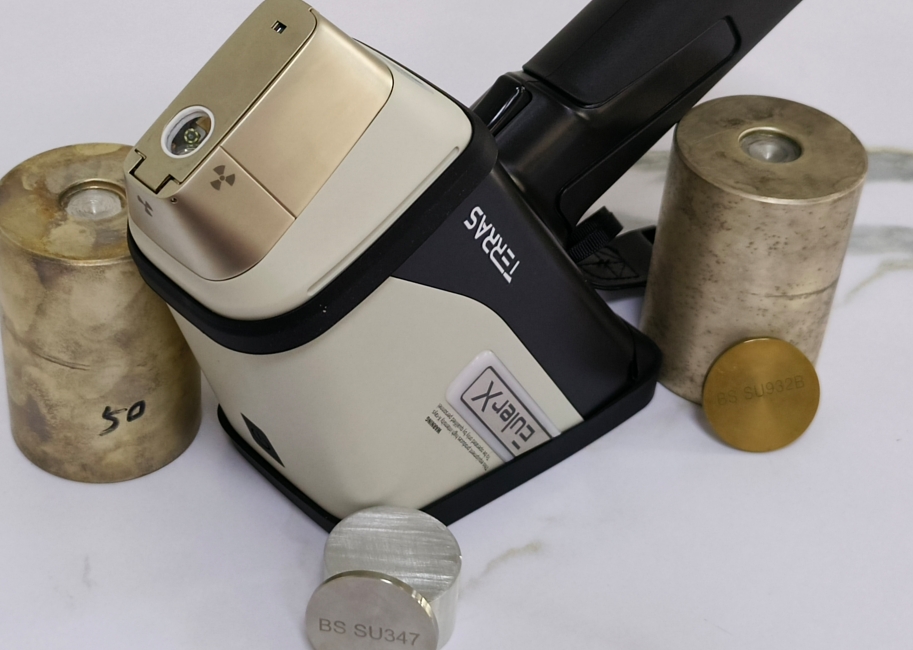
Positive Material Identification
A high-tech enterprise focusing on the development and application of X-ray technology products, committed to becoming a leading supplier of X-ray industrial testing solutions.
Mastering Material Analysis: How Handheld XRF is Reshaping Industries
In the ever-evolving landscape of industrial processes and material analysis, advancements in technology continually push the boundaries of efficiency and accuracy. Among these innovations, Handheld X-Ray Fluorescence (XRF) has emerged as a game-changer, revolutionizing the way industries analyze and manage materials. From mining and metallurgy to environmental monitoring and beyond, Handheld XRF is reshaping industries by offering rapid, non-destructive analysis with unparalleled precision.
Unveiling the Power of Handheld XRF
Handheld XRF instruments utilize the principles of X-ray fluorescence to determine the elemental composition of a material. By emitting X-rays onto a sample, the device induces characteristic fluorescent X-rays from the elements present in the material. These emitted X-rays are then detected and analyzed to identify the elements and quantify their concentrations.
The compact and portable nature of handheld XRF devices allows for on-site analysis in real-time, eliminating the need for time-consuming laboratory testing and sample preparation. This versatility empowers industries with instant decision-making capabilities, facilitating faster processes and improving overall efficiency.

Applications Across Diverse Industries
Mining and Exploration
In the mining industry, rapid and accurate analysis of ore samples is crucial for optimizing extraction processes and ensuring resource efficiency. Handheld XRF devices enable geologists and mining engineers to perform in-situ analysis directly at the exploration site. By swiftly determining the elemental composition of rock samples, these instruments aid in identifying valuable minerals, assessing ore grades, and making informed decisions about mining operations.
Metals and Alloys
For metallurgical industries, such as manufacturing and metal recycling, precise material analysis is vital for maintaining quality standards and optimizing production processes. Handheld XRF technology facilitates the identification of alloy compositions, ensuring compliance with industry specifications and regulations. Whether analyzing incoming raw materials or conducting quality control inspections on finished products, handheld XRF devices provide rapid results, enabling prompt adjustments and minimizing downtime.
Environmental Monitoring
In environmental science and remediation efforts, the ability to assess contamination levels in soil, water, and air is critical for safeguarding ecosystems and public health. Handheld XRF instruments offer a non-destructive method for analyzing environmental samples, allowing researchers and environmental engineers to quickly screen for pollutants and monitor remediation progress. This capability streamlines environmental assessments, accelerates cleanup efforts, and enhances overall environmental stewardship.
Advantages Over Traditional Methods
The adoption of handheld XRF technology offers numerous advantages over traditional material analysis techniques:
Speed: Handheld XRF provides instantaneous results, reducing analysis time from days to minutes.
Portability: The compact design enables on-site analysis, eliminating the need for sample transportation to centralized laboratories.
Non-destructive: Samples remain intact during analysis, preserving their integrity for further testing or archival purposes.
Multi-element Analysis: Handheld XRF devices can detect a wide range of elements simultaneously, offering comprehensive compositional analysis in a single scan.
Cost-Efficiency: By minimizing laboratory expenses and increasing operational efficiency, handheld XRF delivers a significant return on investment for businesses.

Future Perspectives
As technology continues to advance, the capabilities of handheld XRF instruments are expected to further evolve. Innovations such as improved sensitivity, expanded elemental coverage, and enhanced data interpretation algorithms will continue to refine the performance of these devices, opening up new possibilities for material analysis in diverse industries.
Introducing the EulerX 900 Handheld XRF Analyzer: A Paradigm Shift in Ferroalloy Analysis
The EulerX 900 series handheld alloy analyzer epitomizes a quantum leap in ferroalloy analysis, harnessing state-of-the-art Energy Dispersive X-ray Fluorescence technology (ED-XRF) to deliver unparalleled sensitivity and detection limits. This portable powerhouse transcends traditional boundaries, offering seamless elemental analysis of ferroalloys with unprecedented speed and accuracy.
Embodying the pinnacle of technological innovation, the EulerX 900 series revolutionizes on-site ferroalloy analysis, obviating the need for cumbersome sample preparation while ensuring rapid detection and precise quantitative analysis. Its ergonomic design and intuitive interface render it a versatile tool for steel plants, empowering operators to conduct real-time analyses with unparalleled ease and efficiency.
Conclusion
Handheld XRF technology represents a paradigm shift in material analysis, offering industries a powerful tool for rapid, on-site elemental analysis. From mining and metallurgy to environmental monitoring and beyond, the versatility and efficiency of handheld XRF devices are reshaping industries by providing accurate insights in real-time. Embracing this transformative technology enables businesses to optimize processes, enhance product quality, and drive innovation in the ever-evolving landscape of material analysis.
Join Us
Subscribe to our email list for updates & promotions.



